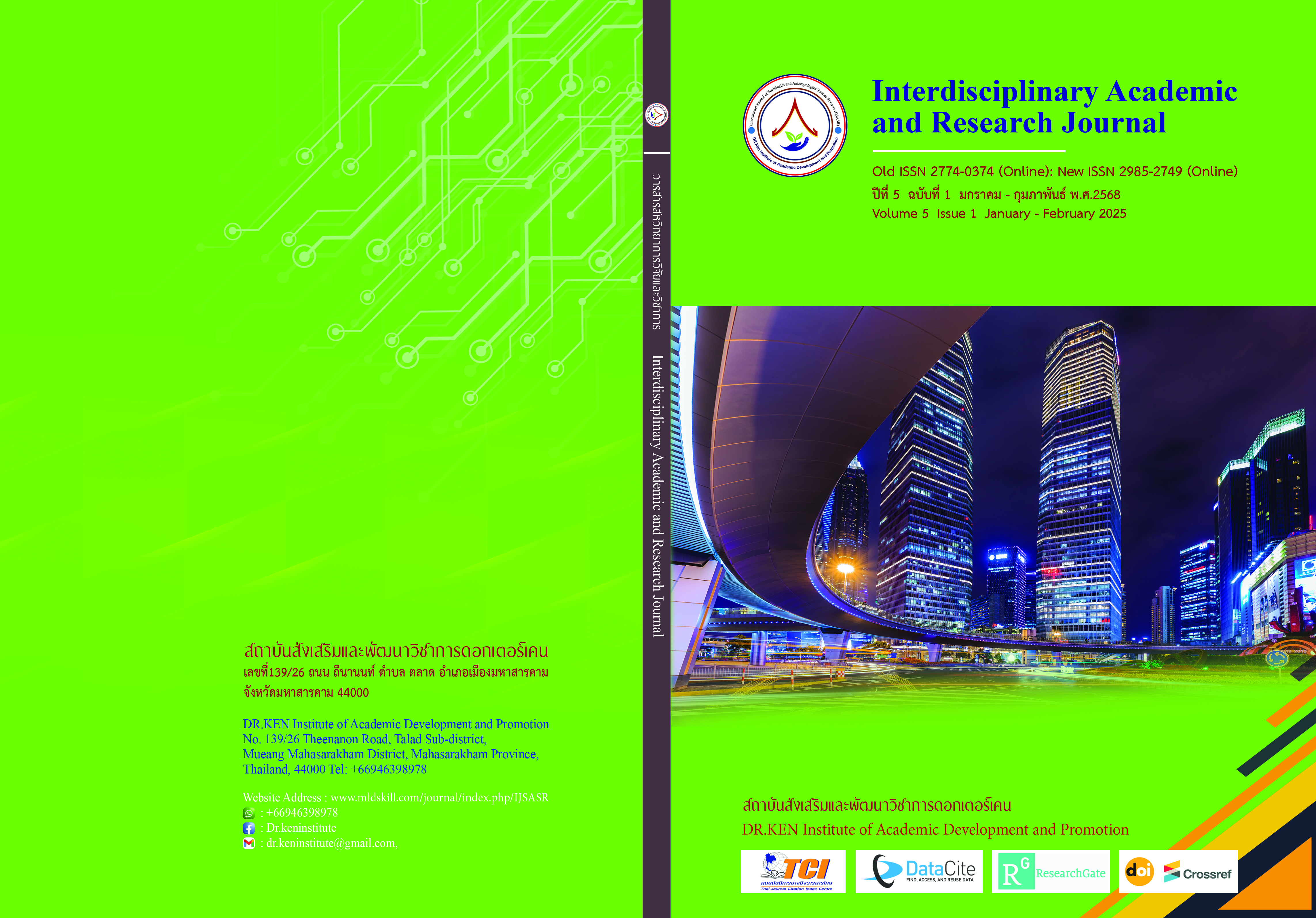Innovative Approaches of Moral Education in Colleges and Universities: A Case of Sichuan Institute of Industrial
DOI:
https://doi.org/10.60027/iarj.2025.279902Keywords:
Moral education, Moral Education in Colleges and Universities, College students, Innovation approachesAbstract
Background and Aims: With profound changes in the Chinese economy, The social structure should be observed. Interest pattern Ideological concept and the dangers hidden in the ideology and morality of contemporary college students. This study examined the state of moral education in colleges and universities.
Research Methodology: The impact of moral education on the quality of character in college students. Problems of moral education today and the cause of the problem Then I analyzed the innovation path of moral education in colleges and universities.
Results: According to the descriptive statistics of background variables, it was found that the highest percentage of gender was "female" at 65.9%, while the second grade had the highest percentage of 100. 40.0 each. The major field of study “Science and Engineering” has the highest proportion (66.9 %) in terms of political profile. "Members of the Communist Youth League" had the highest proportion, 75.0%. In terms of academic performance, "moderate" had the highest proportion, 57.6%. For the "urban" student source category, the proportion was 54.0%.
Conclusion: When combined with the above analysis Students should emphasize the importance of moral education in colleges and universities. Students should value the role of self-study and emphasize innovative strategies such as self-monitoring, self-discipline, and self-control.
References
Brown, K. (2017). The communist party of China and its ideology. In Critical readings on the communist party of China. (4 vols. set) (pp. 797-815). Brill. DOI: https://doi.org/10.1163/9789004302488_029 DOI: https://doi.org/10.1163/9789004302488_029
Chen, T. H. E. (2014). Chinese education since 1949: Academic and revolutionary models. Elsevier.
Cheng, H. (2019). A critical review of Chinese theoretical research on moral education since 2000. ECNU Review of Education, 2 (4), 561-580. DOI: https://doi.org/10.1177/2096531119886490
Colby, A., & Sullivan, W. M. (2009). Strengthening the foundations of students' excellence, integrity, and social contribution. In Educating Citizens: Preparing America's Undergraduates for Lives of Moral and Civic Responsibility (pp. 27-48). Jossey-Bass.
Fengyan, W. (2004). Confucian thinking in traditional moral education: Key ideas and fundamental features. Journal of Moral Education, 33 (4), 429-447. DOI: https://doi.org/10.1080/0305724042000327984
Granet, M. (2013). Chinese civilization. Routledge. DOI: https://doi.org/10.4324/9781315005508
Hurtado, S., Alvarez, C., Guillermo-Wann, C., Cuellar, M., & Arellano, L. (2012). A Model for Diverse Learning Environments. In book. Doi: 10.1007/978-94-007-2950-6_2. DOI: https://doi.org/10.1007/978-94-007-2950-6_2
Lawrence, G. (1993). Aristotle and the Ideal Life. Philosophical Review. 102, 1–34. DOI: https://doi.org/10.2307/2185651
Li, Y., & Cui, H. (2022). On the value of the Chinese pre-Qin Confucian thought of “harmony” for modern public mental health. Frontiers in Psychology, 13, 870828. DOI: https://doi.org/10.3389/fpsyg.2022.870828
Maosen, L. (1990). Moral education in the People's Republic of China. Journal of Moral Education, 19 (3), 159-171. DOI: https://doi.org/10.1080/0305724900190302
Maosen, L., Taylor, M. J., & Shaogang, Y. (2004). Moral education in Chinese societies: Changes and challenges. Journal of Moral Education, 33 (4), 405-428. DOI: https://doi.org/10.1080/0305724042000327975
McClellan, B. E. (1992). Schools and the Shaping of Character: Moral Education in America, 1607-Present. ERIC Clearinghouse for Social Studies/Social Science Education, 2805 East 10th Street, Suite 120, Bloomington, IN 47408-2698.
Nash, R. J. (1997). Answering the "virtuecrats": A moral conversation on character education. Teachers College Press.
Peffer, R. G. (2014). Marxism, morality, and social justice (Vol. 57). Princeton University Press.
Pender, J. (2001). From' structural adjustment' to' comprehensive development framework': conditionality transformed? Third World Quarterly, 22 (3), 397-411. DOI: https://doi.org/10.1080/01436590120061679
Peters, M. A. (2019). The Chinese Dream: Xi Jinping Thought on Socialism with Chinese characteristics for a new era. In The Chinese Dream: Educating the Future (pp. 28-36). Routledge. DOI: https://doi.org/10.4324/9780429329135-3
Rest, J. R., Narvaez, D., Bebeau, M. J., & Thoma, S. J. (1999). Postconventional moral thinking: A neo-Kohlbergian approach. Lawrence Erlbaum Associates. DOI: https://doi.org/10.4324/9781410603913
Stockman, N. (2013). Understanding Chinese Society. John Wiley & Sons.
Swaner, L. E. (2005). Linking engaged learning, student mental health and well-being, and civic development: A review of the literature. Liberal Education, 91(3), 16-25.
Zhao, Y. (2012). The struggle for socialism in China: The Bo Xilai saga and beyond. Monthly Review, 64 (5), 1-10. DOI: https://doi.org/10.14452/MR-064-05-2012-09_1
Downloads
Published
How to Cite
Issue
Section
License
Copyright (c) 2025 Interdisciplinary Academic and Research Journal

This work is licensed under a Creative Commons Attribution-NonCommercial-NoDerivatives 4.0 International License.
Copyright on any article in the Interdisciplinary Academic and Research Journal is retained by the author(s) under the under the Creative Commons Attribution-NonCommercial-NoDerivatives 4.0 International License. Permission to use text, content, images, etc. of publication. Any user to read, download, copy, distribute, print, search, or link to the full texts of articles, crawl them for indexing, pass them as data to software, or use them for any other lawful purpose. But do not use it for commercial use or with the intent to benefit any business.
















.png)


